The Venice Architecture Biennale [VAB]
Architectuul turns ten years old and, in order to celebrate such an important anniversary, launches a research project dedicated to the most important architecture event in the world, the Venice Architecture Biennale - VAB!
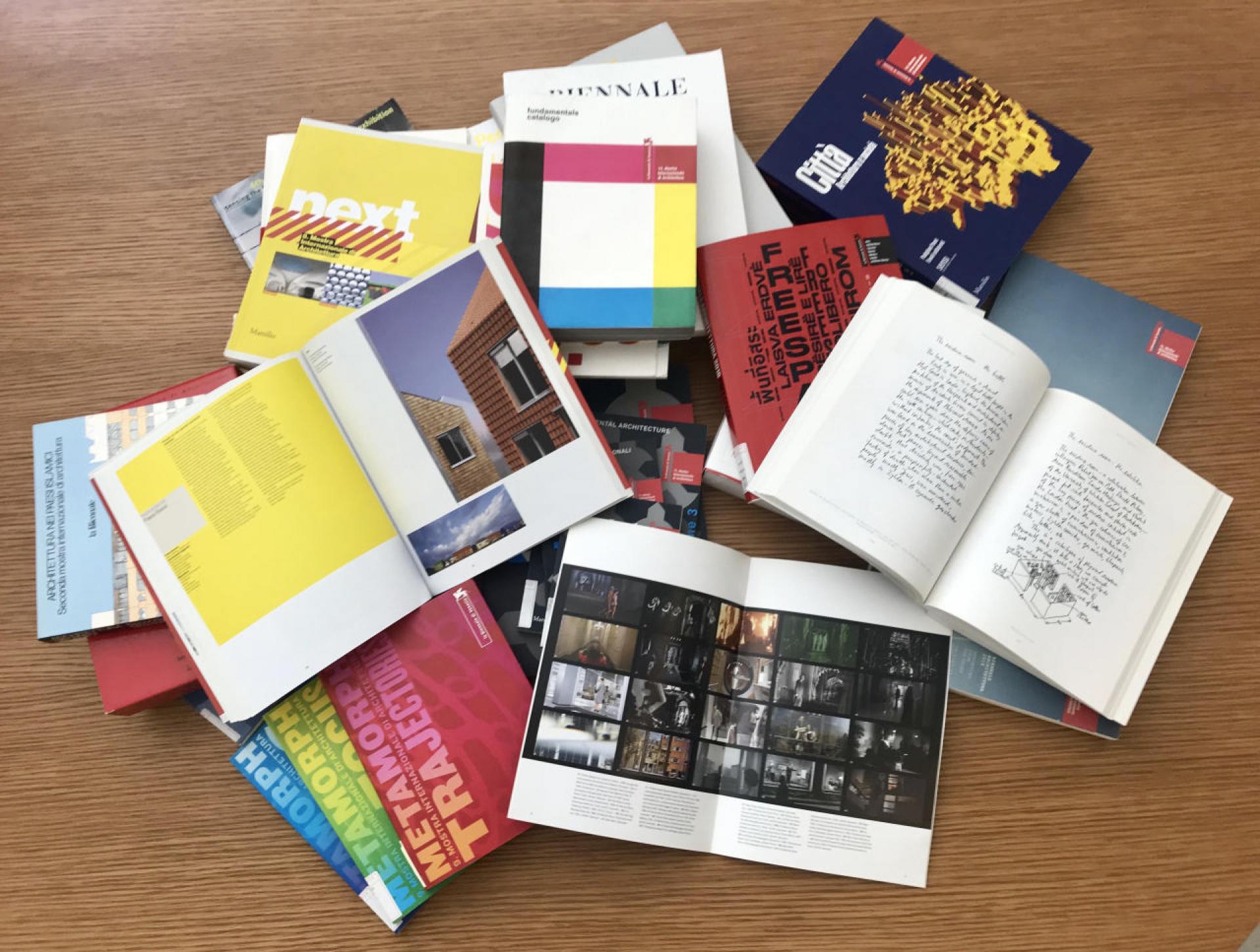
Catalogues from the previous Venice Biennials. | Photo © Stefano Gobbi
True to the spirit that animated the birth of the platform and nourished its development throughout all these years, its open worldwide community traces back the history of the Venetian event by investigating its different editions, their protagonists and the many more or less known events that characterized them, through the textual contributions of professionals, historians, curators, critics, scholars or simple enthusiasts from all over the world who already collaborated with Architectuul in the past.
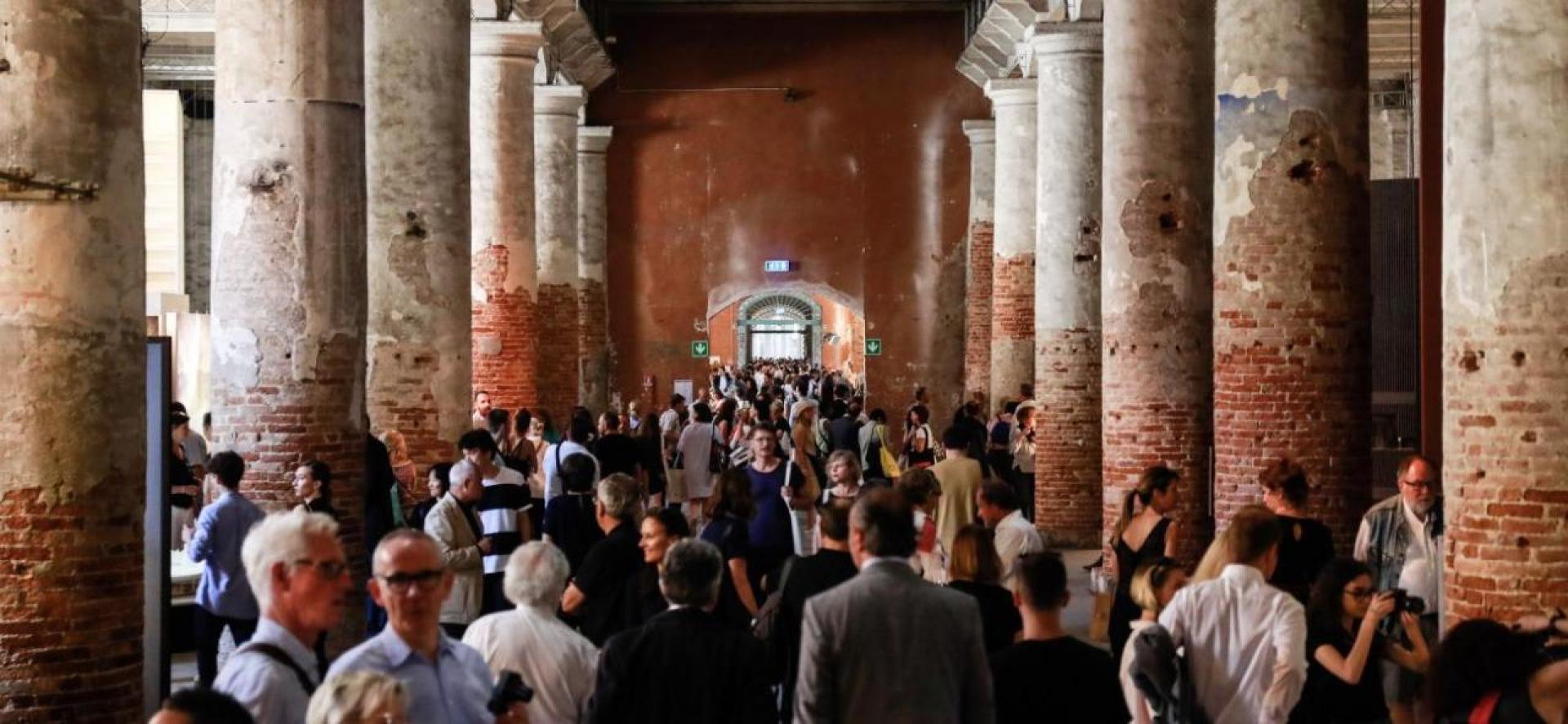
Just as in Venice curators are offered with a room to work on in order to develop a personal take on the main theme of the exhibition, Architectuul’s VAB project aims at providing a platform for people to look back at the previous editions of the Venetian event, its celebrated triumphs, spectacular failures, and their endless facets. Each and every one of them is considered as a ‘cold case’ worth being reopened and investigated further to shine a light on a particular show, an event or those people that have often been overlooked or deserve being remembered.
The VAB project will not feature academic essays nor dissertations but instead short personal stories, when not anecdotes, aimed at taking readers to the lagoon city and back in time, behind the scenes of an initiative that, through its ups and downs, always represented the gathering moment for the international architectural community, initially restricted to a few close friends and then gradually enlarged to become an unmissable appointment on the global cultural agenda.
The last decade has seen the development of countless curatorial studies and, with them, the publication of as many books on the history of exhibitions as well as on those exhibitions that made history. A little later the research was extended to architecture shows that were placed under a magnifying glass and inevitably this led to scrutinize the largest architectural event of all, the one that for almost half a century, at more or less regular intervals, takes place in Venice.

Born in the aftermath of the ideological and cultural crisis that shook Italy and the western world at the end of the 1960s, the Venice Architecture Biennale can be considered a work in progress developed through the different approaches of its several directors, sometimes contradicting themselves from one edition to another.
The first real display of architecture in Venice dates back to 1968, when within International Art Exhibition of the Biennale Carlo Scarpa curated Linee della ricerca contemporanea: dall’informale alle nuove strutture bringing together within a single space laid out by Scarpa himself the work of artists, photographers, set designers, graphic designers, ceramists and architects in order to achieve that integration between the various artistic practices to which the Biennale has always aimed.
Nevertheless, unlike the Art Biennale from which it stemmed and despite the many recent studies and investigations mentioned earlier, it is still difficult to precisely indicate the first edition of the Venice Architecture Biennale and erratic has been its cadence so far.
Its 17thedition was meant to take place in 2020, the year the COVID-19 pandemic not only forced the organizers to postpone the event but also took the life of the man who envisioned it in the 1970’s: Vittorio Gregotti. In 1975 the latter was commissioned to reformulate the Biennale of Art, opening it to the public debate, taking it out of the Arsenale Gardens and extending it to the city and the Veneto region. It is for all these reasons that Gregotti decided to include architecture and, by doing so, renaming the event International Exhibition of Visual Arts and Architecture, an appellation with which the reformed Biennale was officially inaugurated and, for the first time in its history, developed around the unifying theme of the environment, foreseeing national participation.
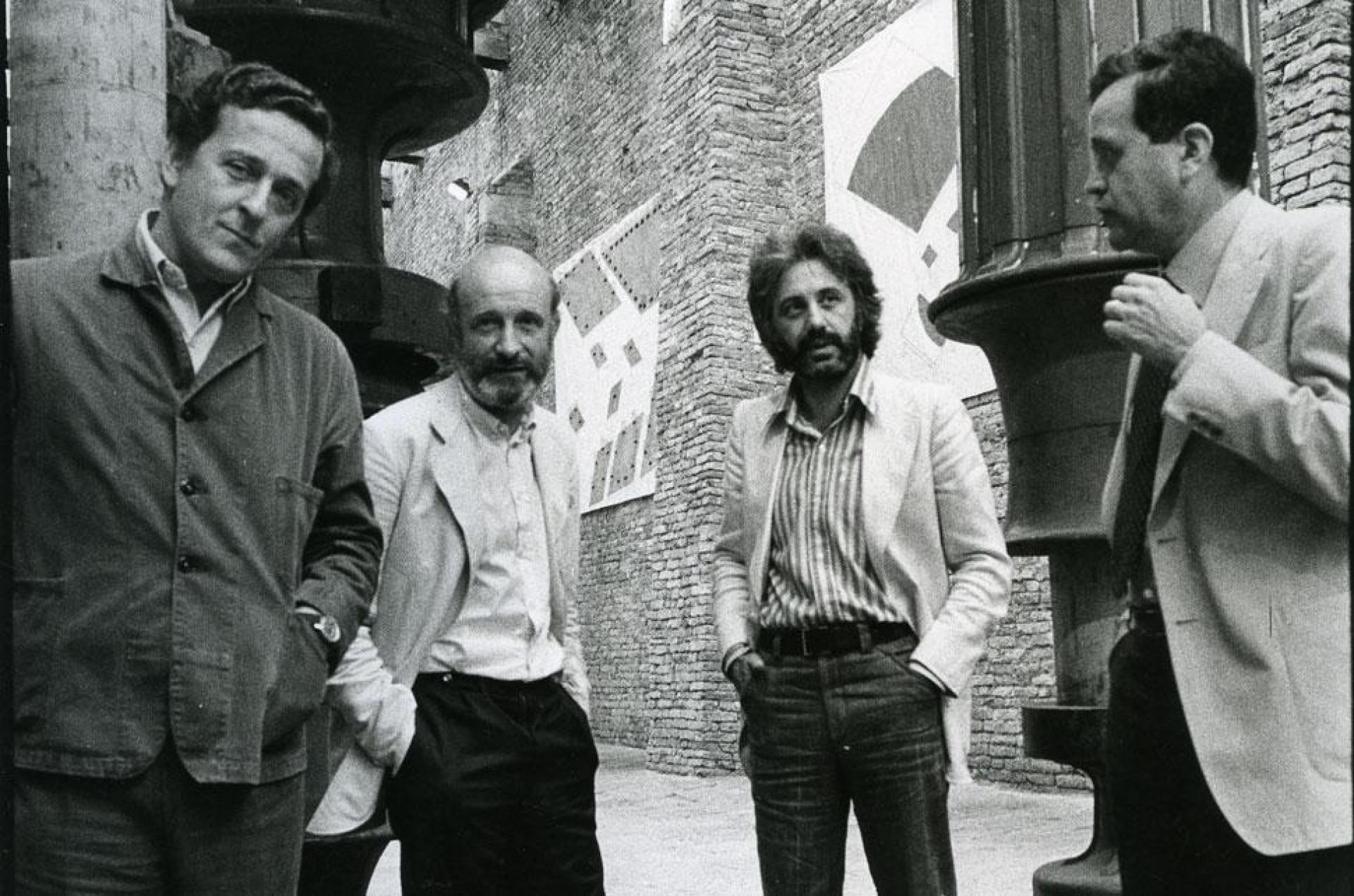
From left to right: Carlo Ripa di Meana (President of the Venice Biennale), directors Vittorio Gregotti (Visual Arts and Architecture), Luca Ronconi (Theatre) and Giacomo Gambetti (Film and Television) in 1975. | Photo © Lorenzo Capellini
In that same year, Gregotti also anticipated the next International Art Exhibition with a series of one-off events aimed at relaunching the Biennale and communicating its new cultural policy. It is in this context that one should consider the Proposte per il Mulino Stucky exhibition set up at the Magazzini del Sale, where the results of the open idea competition for the recovery of the former unused flour mill threatened with demolition were presented. It was first occasion in which a common theme for the confrontation between art and architecture was proposed, an approach adopted in all ensuing editions starting with Ambiente, partecipazione, strutture culturali in 1976.
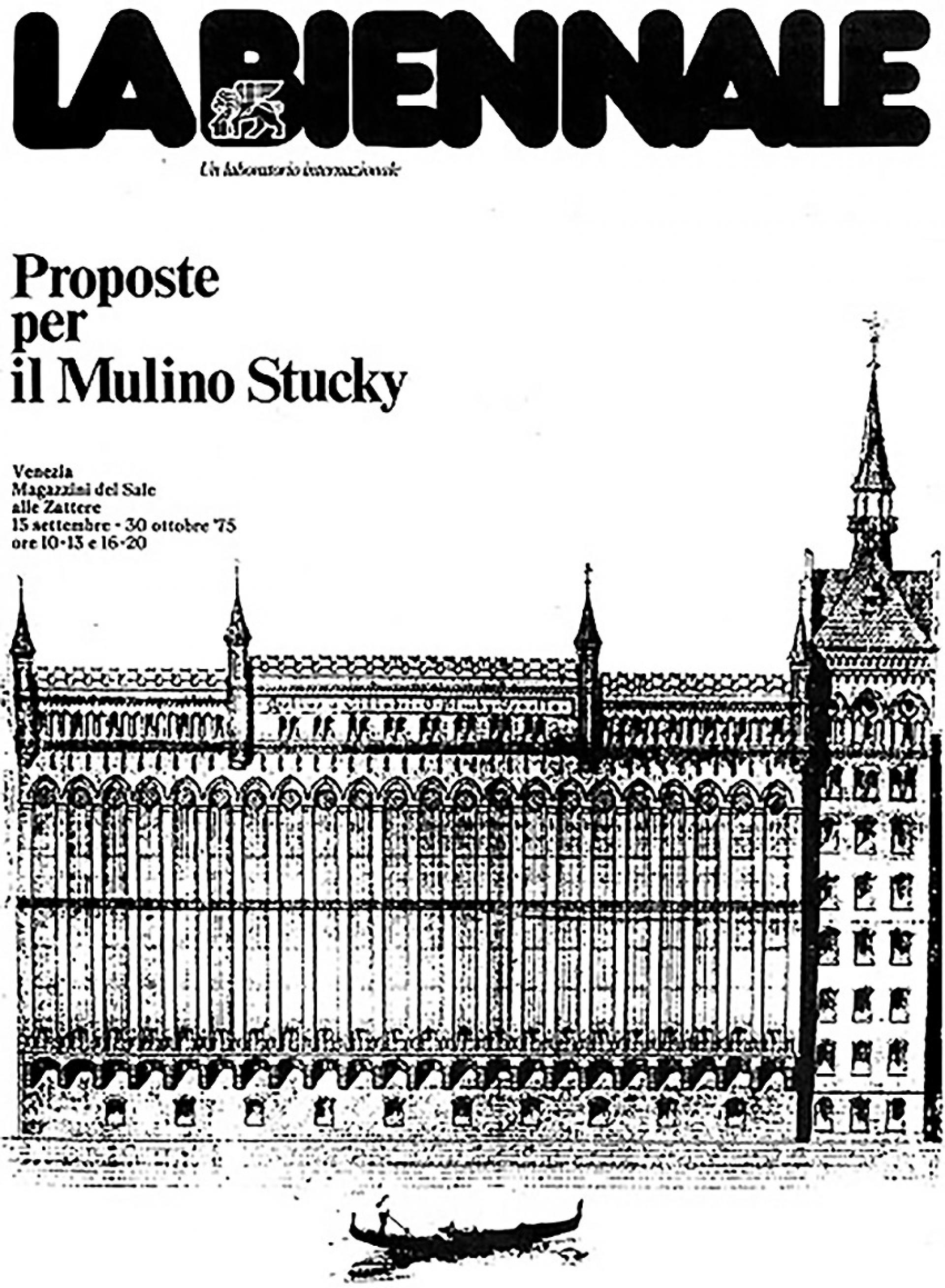
In compliance with the Biennale reform, that same edition was characterized by a greater opening to new areas of interest, such as architecture, presenting three different exhibitions simultaneously set up in as many locations of the lagoon city: one dedicated to design (Werkbund 1907. Origini del design), one to the history of contemporary architecture (Razionalismo e architettura in Italia durante il fascismo) and one on the future of the discipline through the comparison between the European and the North American schools (Europa-America, centro storico, suburbio). This approach showed greater sensitivity to everyday issues as well as to the general public, trying to present the initiative not only as exclusively cultural but also capable of attracting tourists. Since the mid-eighteenth century, architecture exhibitions had always been the subject of public debate and it is in such a longlasting tradition one should place the conference ‘Quale Movimento Moderno’ hosted at the Palazzo del Cinema on the Lido of Venice where, as in CIAM and Team 10 gatherings before, architects from both Europe and the United States discussed the possible future of architecture and its practice.
According to Vittorio Gregotti himself, those initiatives were mostly carried out quickly and without relevant success, but all were meant to lay the foundation of Utopia e crisi dell’antinatura. Intenzioni architettoniche in Italia, the first true architecture exhibition opened in 1978.

From left to right: Carlo Ripa di Meana, Carlo Aymonino (behind), Aldo Rossi and Vittorio Gregotti in 1979. | Photographer unknown
To Gregotti’s somewhat elitist approach followed the popular one chosen by Paolo Portoghesi who anticipated the inauguration of the 1st International Architecture Exhibition in 1980 by entrusting Aldo Rossi with the realization of that floating structure known as the ‘Teatro del Mondo’, thus starting a dialogue with the city and that promotional communication strategy culminating with the celebrated ‘Strada Novissima’ in the Corderie dell'Arsenale, turning architecture into a theme of public debate through its spectacle and festivalization.
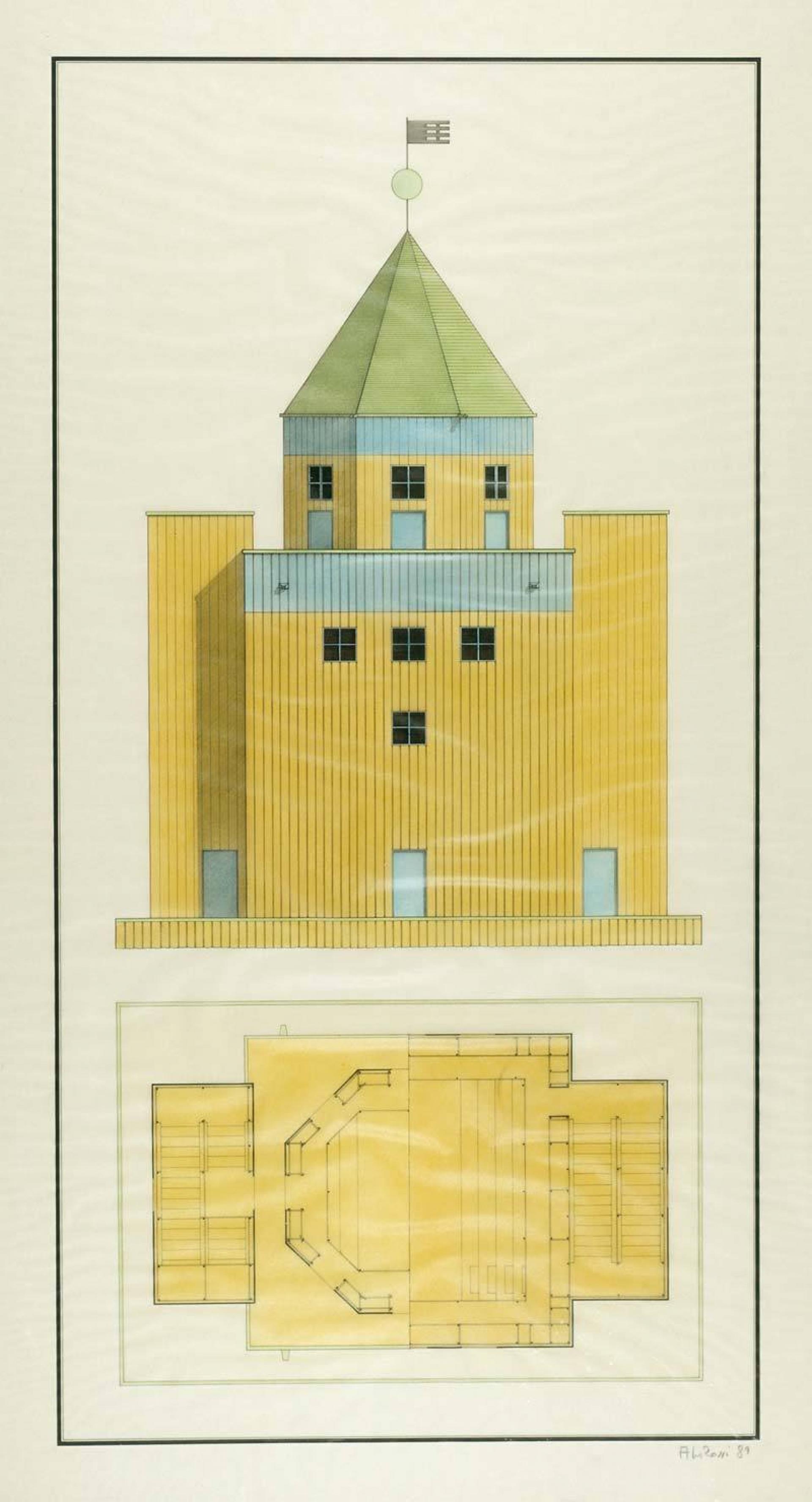
That’s more or less where Architectuul’s VAB project starts from.
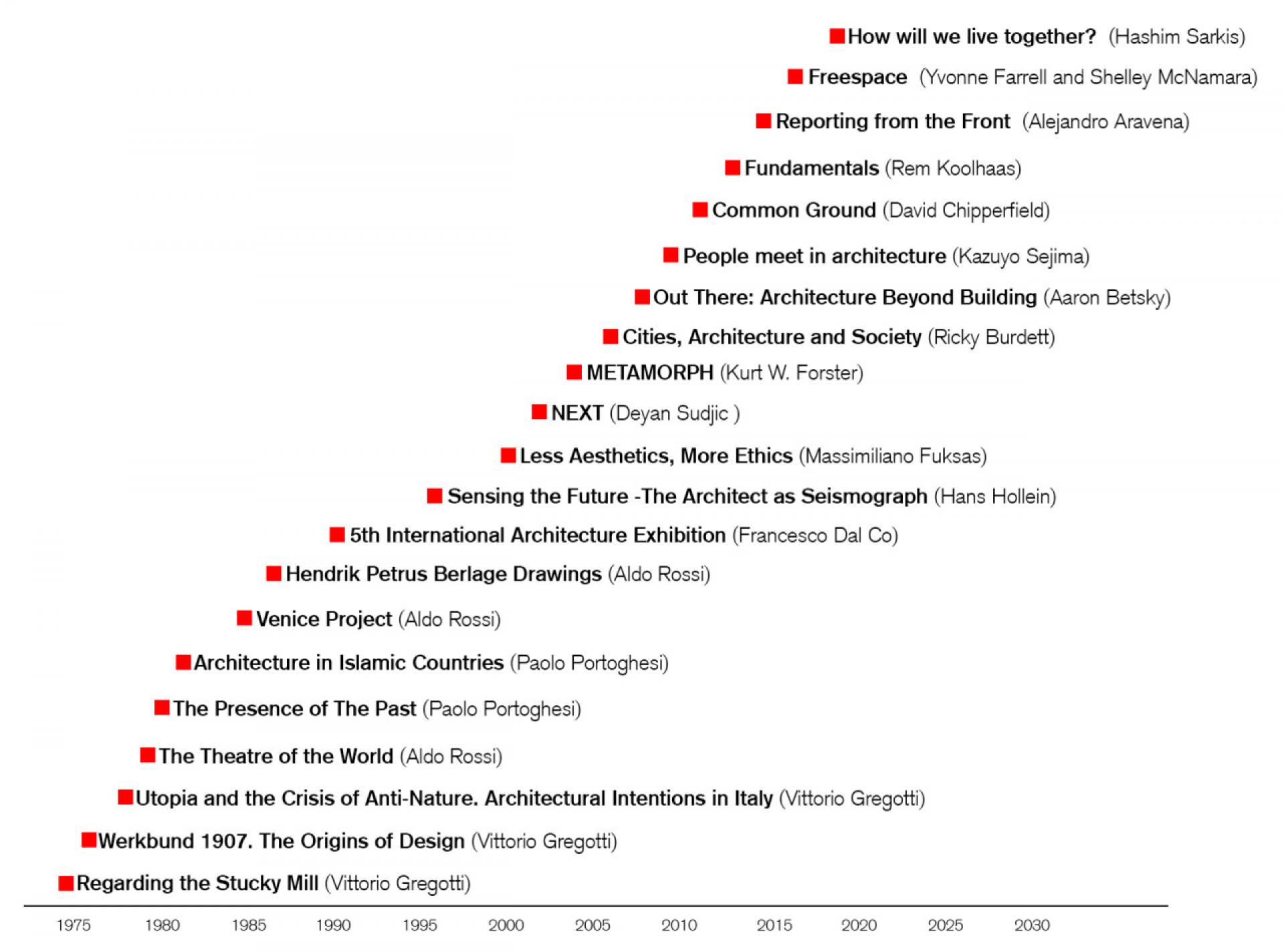
We hope you enjoy this endeavor as much as we enjoyed discussing and developing it with the help of all those who generously contributed with the stories you’ll be reading in the up and coming months.
-
Alessio Rosati